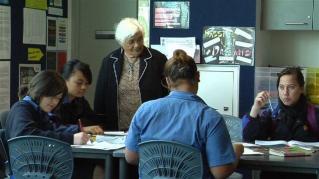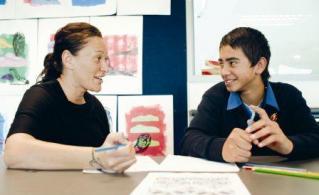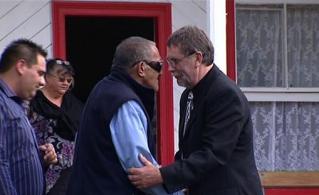Section navigation

In this clip we hear a range of perspectives on what is needed to sustain the changes made at Taihape Area School. Participants discuss the importance of putting students first, and engaging with the community. This is congruent with the Ministry’s Māori education strategy, which emphasises the importance of including whānau in students’ education.
Questions / Things to think about / Activities
1. Taihape Area School believe they have put things in place to ensure that change is sustained. What plans/strategies do we have in place to sustain changes that will enhance Māori student achievement?
2. How can we ensure ownership of the necessary changes we make, for sustainability?
3. The findings of research conducted by Biddulph et al (2003) show that it is sustained parental involvement, focused on learning activities/tasks, that leads to improvement in children's achievement. What are we doing in our school to bring about change that is real and lasting? What do we need to do to ensure that the positive changes we make are sustainable?
4. In her review of the literature on effective engagement of Māori whānau in English medium education, Tahuri (2007) highlights key characteristics, as outlined below. What does/could this look like in our school?
- Recognition of Māori as equal partners, with their unique and rightful place (mana whenua)
- Validation of Māori culture (tikanga)
- Fostering of sustainable partnership relationships (whakawhanaungatanga)
- Doing the right thing, in a collaborative way (te mahi tika)
- Sharing responsibility and working together (ma te katoa te mahi)
- Bringing about the desired outcome/shared vision (of Māori students realising their potential), through collaboration and negotiation (ma te mahi tahi ka ea).
5. As outlined in Ka Hikitia, the Ministry's Māori education strategy, parents and whānau have a significant role to play in supporting their children's education, to help them realise their potential. What can we do to engage whānau in a genuine partnership?
6. What do we need to do to discover what aspirations our school whānau have for their tamariki?
7. What evidence is there that shows what works for Māori students, in terms of whānau engagement? (See pp 20, 32, 44, 47-49, 50 in Key evidence: Ka Hikitia about engaging parents.) How can we apply this evidence in our context?
8. ERO (2007) has identified common characteristics of good practice in kura kaupapa Māori. These include:
- whanāu having high expectations that their tamariki will succeed
- the importance of a quality, holistic education that creates in students a strong sense of identity
- the evaluation/review of programmes to determine their effectiveness in terms of student achievement
- whānau working together
- teachers using assessment information to inform the next teaching steps
- teachers sharing assessment information with students to inform the next learning steps
- teachers reflecting on their practice, with a view to improving their teaching.
9. How can we apply the aforementioned in our English medium context?
Filed under: Productive partnerships | Identity Language and Culture | Effective leaders





